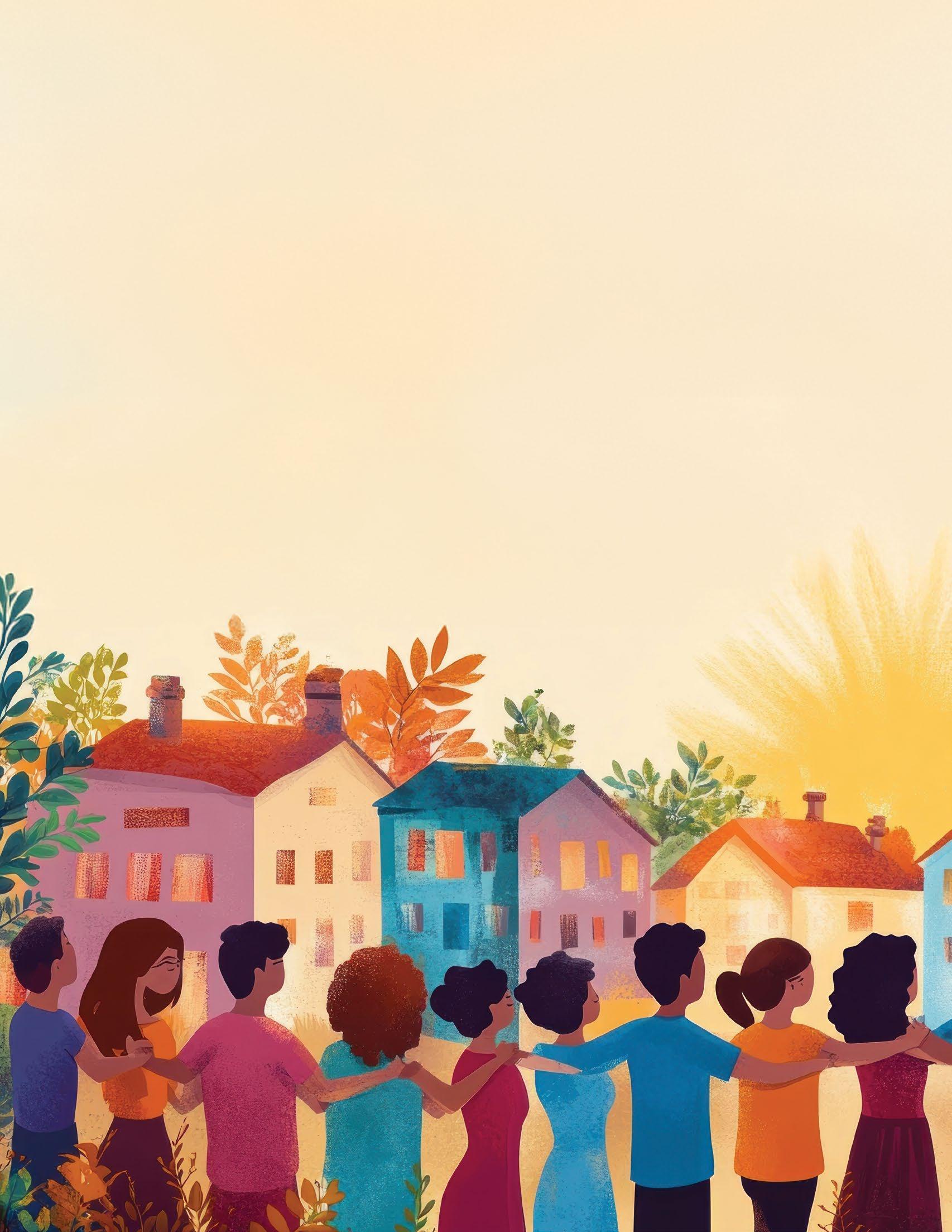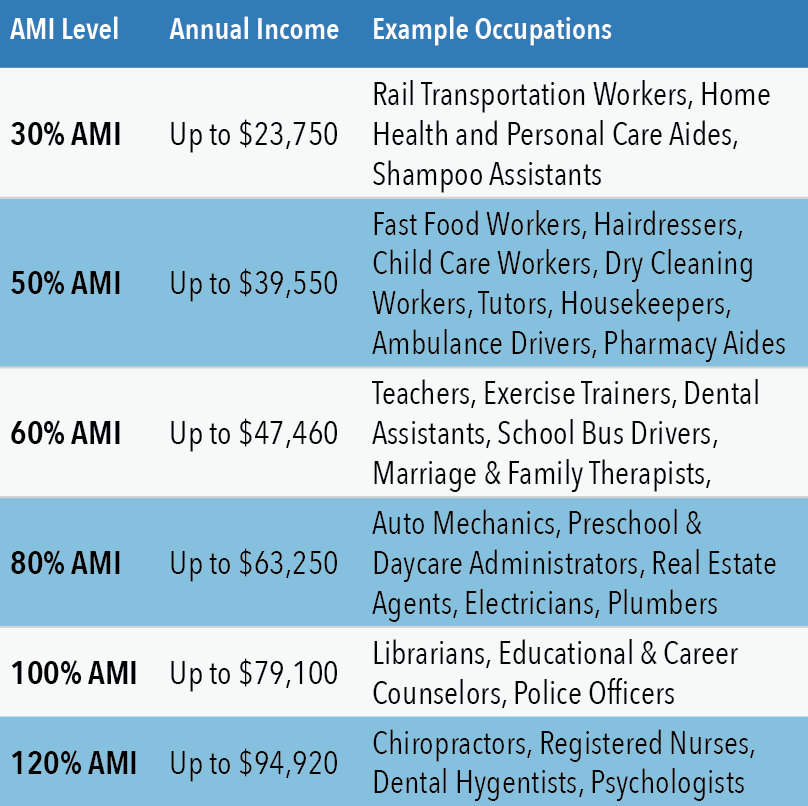
9 minute read
Building Sustainable Communities & Breaking the Cycle of Poverty with Mixed Income Affordable Housing
By Elaine Acker for the Texas Affiliation of Affordable Housing Providers
Texas has seen its share of booms—oil, tech, housing, and population—but the future depends on how we build communities where everyone can thrive. A strong economy needs more than just opportunity. It needs a place for everyone to call home. That’s where mixed-income developments step in, helping communities grow and prosper by offering housing that welcomes families across a wide range of incomes.
The vast majority of the affordable housing communities that are built today are, by design, mixed income," explains TAAHP Executive Director Roger Arriaga. "They have a certain number of units that are for 30 to 80 percent of area median income (AMI), and now, we’re even seeing units reserved for families up to 120 percent AMI.
The reality is that many of the teachers, first responders, grocery store clerks, and small business employees who make communities work earn incomes in this range of AMI’s and are eligible for affordable housing programs. This isn’t because they’re failing, but because the cost of living keeps climbing. As Arriaga notes, “More people are now seen as program eligible simply because everything costs more.”
Myth vs. Reality
When people hear the term "affordable housing," old stereotypes often creep in: dilapidated buildings, crime-ridden properties, and absentee landlords. But that’s not the story of today’s mixed-income developments, especially with housing that has been awarded housing tax credits.
These are high-quality developments,” says Arriaga. "They often have swimming pools, workout facilities, spaces for after-school care, and amenities you’d find in any other desirable community. It’s not just a place to live—it’s a place to live and thrive.
And by design, they are built and maintained to serve the community while retaining a high market value for decades.
Developer Megan Lasch, founder of O-SDA Industries, echoes Arriaga. "People assume affordable means cheap in terms of quality, and it doesn’t," she says. "Our job is to integrate communities into neighborhoods where you wouldn’t even know you’re looking at affordable housing."
From architectural details to on-site services, today’s developments are thoughtfully planned. Residents benefit from community centers, green spaces, playgrounds, and programs designed to strengthen families and connect neighbors.
Mixed-income housing is built to serve a broad spectrum of residents, from diverse backgrounds and educational levels and who earn a broad range of household incomes. In places like Austin, 60 percent AMI is close to $70,000 a year. “That’s a lot of money,” says Arriaga. “And yet people don’t think of those earners as needing housing support—but they do.”
Today's Affordable Housing is Built to Serve a Broad Spectrum of Residents and is Designed to Integrate into Existing Communities
What Mixed-Income Looks Like in Action
One of the biggest misconceptions about affordable housing is that these developments are all exempt from property taxes.
I often hear arguments against affordable housing based on the idea that the community needs properties that contribute to the tax base,” says Lasch. “Yet, they’re looking at a development that would be generating tax revenue based on operating income. We could be paying a million dollars over the course of 10 or 15 years when we develop a raw piece of property that had been generating only $1,200 a year in taxes.
In Grand Prairie, a formerly vacant property that generated less than $5,000 a year in taxes has been transformed into a vibrant senior living community. Thanks to smart partnerships and thoughtful planning, that same property will now contribute thousands of dollars in property taxes every year. “It made complete sense,” says Lasch. “Instead of sitting empty, that land now provides homes. And during construction, the development generated revenues from building permits, boosted local businesses, and strengthened the city's economy.” And once residnets move in, support the community through the buying of goods and services.
Meanwhile, in many rural communities, service workers now commute from over 50 miles away because housing isn’t available, or affordable, where they work. For example, in Fredericksburg, the tourism boom and the popularity of the area’s wineries and breweries has inspired landlords (who once provided rental housing for local staff) to turn their properties into short-term rentals for visitors. The longer commutes for staff mean that local businesses who have trouble keeping good staff are now paying significantly higher wages just to attract employees.
This is a prime opportunity to explore mixed-income developments that create housing options that serve the people who power communities like Fredericksburg. “In a situation like this, you inevitably need some sort of government intervention,” says Arriaga. “Because that’s the only way to stop the cycle and give the local community a chance to build inventory of available housing to serve their own workforce.”
Redefining Poverty and Opportunity
A big part of the shift happening in Texas is about changing the narrative. Poverty isn’t just about income—it’s about access and opportunity. Mixed-income communities place families next to neighbors with different life experiences, jobs, and resources. That kind of everyday exposure can help broaden what residents, especially children, believe is possible for their own futures. Viable affordable housing has less to do with providing basic housing options few would choose and more to do with ensuring that families are not spending every dime on having a safe, high quality, desirable place to live.
When people grow up around peers who have more opportunities, they start to believe that those opportunities are possible for them, too.
Mixed-income real estate developers are providing more than housing and the idea of new opportunities. And there’s far more expected of them than most people realize. They are supporting many of the complex social services required to break that old cycle of "limited possibilities." These can include initiatives for childcare, after-school programs, services for seniors, and more. Even though this is outside the scope of most market-rate developers, there are expectations from lenders and policymakers that affordable housing developers will create environments where change can happen. They aren't just about housing—they are about changing lives.
Why It Matters to Texas
Mixed-income developments don’t just benefit families. They elevate entire communities:
• Better Workforce Stability: Teachers, first responders, restaurant workers, and small business employees can live near where they work.
• Stronger Local Economies: Mixed-income housing strengthens the local tax base. Developments bring in new property taxes, boost local spending, and create jobs.
• More Resilient Communities: Affordable, high-quality housing reduces long commutes, lowers traffic congestion, and supports local businesses and schools.
Texas continues to attract businesses and new residents, but without housing solutions that match the needs of the full workforce, growth can stall. Communities that embrace affordable housing, which includes availability for mixed-income families are better equipped to meet today’s challenges—and tomorrow’s opportunities. “Affordable housing developments are supporting local infrastructure, and bringing real economic benefit,” says Lasch. “They’re not a drain—they’re a community investment.”
Why Mixed-Income Housing Matters for Texas’ Future
The need for mixed-income affordable housing communities will only grow. Texas is projected to become the most populous state in the nation by 2045, with an increase from today’s 31 million to an anticipated 42 million or more. Housing developments built today will serve those residents, and housing affordability will remain one of the top challenges facing our cities and towns.
Without accessible housing options, the cost of living rises, essential workers leave, and businesses struggle to recruit and retain employees. That’s what’s called the doom loop cycle and it’s something no community can afford.
Without accessible housing options, the cost of living rises, essential workers leave, and businesses struggle to recruit and retain employees.
Mixed-income developments offer a practical and sustainable path forward for Texas. They are not solely about assisting individual residents but are fundamentally about building communities that work for everyone. By promoting inclusivity, these communities help ensure that growth remains balanced, equitable, and prepared for the future. When housing options cater to every stage of life and income level, the benefits extend beyond individual families—they strengthen the entire community and keep the Texas dream attainable for all.
A Commitment to Growth
Texas isn’t just a place where businesses can thrive—it should be a place where families succeed and thrive. Building mixed-income communities is not an added burden; instead, they become a catalyst for opportunity, resilience, and shared prosperity. These neighborhoods help foster social cohesion by encouraging interactions among residents from diverse backgrounds, which in turn creates a more understanding and unified community. Additionally, mixed-income developments support local economies by bolstering small businesses and maintaining a broad range of services and retail options that all residents can enjoy. This diversity helps develop dynamic, vibrant neighborhoods that reflect the true fabric of Texas—varied and inclusive. As Arriaga notes, "Mixed-income communities are microcosms of healthy cities—they strengthen our society by making sure everyone—regardless of their job title or background—has a chance to contribute and succeed." Overall, these communities promote economic stability and long-term resilience, ensuring that all residents have the opportunity to participate in and benefit from the state’s ongoing growth and development. By investing in mixed-income housing, Texas can build a future where success is accessible to all, and communities are stronger and more vibrant than ever before.
The Faces Behind the Data
An Integral Part of the Community Fabric
Understanding Area Median Income (AMI) levels isn’t just a policy exercise. It’s important to stop and acknowledge the real humans served by affordable and mixed-income housing. This snapshot helps illustrate what AMI means in real life by connecting each income bracket to the jobs that keep our communities running.
2025 Texas Area Median Income (AMI) for a 2-person household: $79,200

It’s easy to look at percentages and income charts without fully seeing the faces behind the numbers. But these aren’t just figures. This data represents essential workers, service providers, and professionals who need safe, stable housing in the communities they support. Whether we’re talking about a barista, a child care worker, teacher or police officer, the challenge is the same: wages often fall far short of housing costs. Mixed-income developments are one way to help bridge that gap while addressing the wider concern as it relates to affordable housing: decentralizing poverty.
Sources: HUD's 2025 income limits for Texas.. U.S. Bureau of Labor Statistics (BLS) Occupational Employment and Wage Statistics










